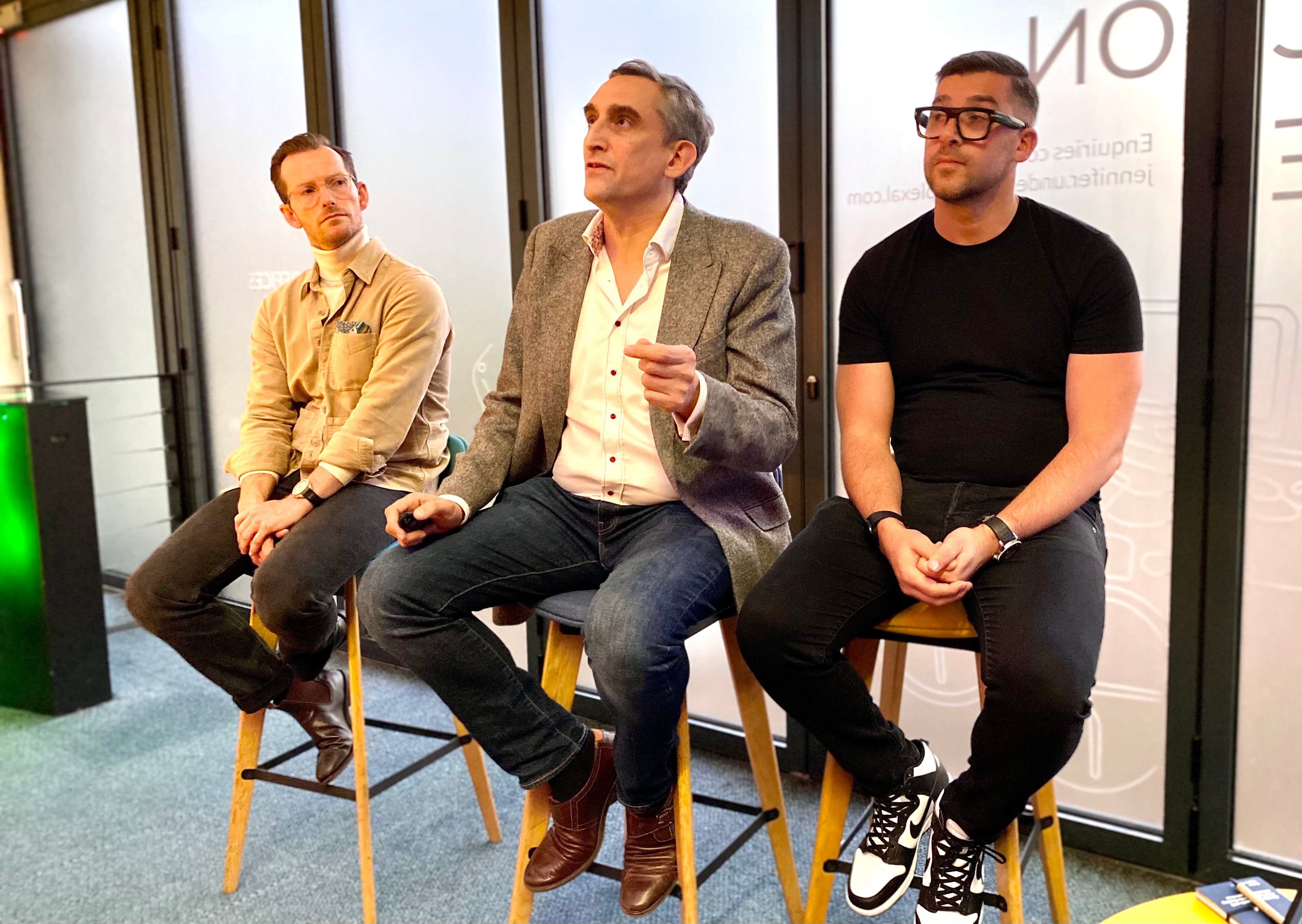We invited Guy Rubin, Founder & CEO of Ebsta, and Alex Irschenberger, VP of Strategy & Growth at Contractbook to join our Founder & Chief Strategist, Paul Sullivan, for a HubSpot User Group (HUG) on how to future-proof your sales process, strategy and organisational structure.
In part two of this HUG blog series, we dive into Alex’s insights around team structures. As a serial entrepreneur, Alex has built a lot of companies and even more teams. As such, he’s led product, marketing, sales and more and deeply understands the pitfalls and siloes that inhibit growth.
He started by picking up on a key stat in Guy’s presentation: the fact that win rates increase by 633% with stronger relationships. And that regardless of what you’re selling in the B2B space, there are more stakeholders involved. But if you look at sales, traditionally there is one person driving a deal. “I think the current model of how we build teams is wrong because that one person is not the best suited for managing everything. No one is. No one can do everything in a deal, no one can manage all stakeholders on the other side of the table and no one can manage all stakeholders internally.” Alex stated.

Building a winning RevOps team structure
The key is collaboration. While the conclusion may be obvious, it remains clear that a remarkable amount of businesses are working in silos, impacting their ability to be efficient and grow. Alex points out that to make this shift, you must motivate appropriately. Currently, the only person being incentivized to help close this deal is the account executive (AE). Everyone has other tasks to complete, other KPIs to achieve. For sales, it’s revenue, marketing - leads. Customer success teams (CS) - retention. These targets are not aligned.
If you’re looking to build a RevOps team, start by asking some questions:
- Who are the internal stakeholders?
- How do you motivate them to collaborate?
- How can we motivate across teams?
- Is there a shared goal?
- Why would they want to collaborate?
He stresses that in a modern business more targets must be shared and reporting structures must be more fluid. He recommends that you start by examining your ICP and then splitting the accounts into smaller segments, building cohorts of your customers and what those deals look like. Then you combine a team around that, identifying what the best transaction looks like, and what marketing, pre-sales, sales, customer success and product need to do to generate that deal. “Put those people together in a small group - a pod - and those groups shouldn't be bigger than five to six people because that's the most efficient team. If you get into teams of ten people, then they become inefficient,” Alex outlined.
What does this look like in reality? Roughly two AEs, two CS (more depending on deal size), one implementation specialist or similar and one growth marketer. Alex believes they should have equally distributed KPIs, meaning new sales, retention and pipeline, but they all receive bonuses on these three. “I would even go so far as to say they should be weighted equally because if you place 90% on new sales, you know what’s going to happen - the focus only goes on the 90%”.
Guy backed this approach but challenged the remuneration. “I agree with your pod approach, we've tried it as well. Working as a unit and aligning everyone's goals to the same thing is absolutely key. And again, once you know what the data is telling you, you can align people to specific goals. However, I think if you start giving everyone commission, there's no deal, but it's a really interesting point.”
He went on to say, “Giving people real clarity as to what good looks like, getting them focused on achieving that and then sitting back and showing them how their piece of the puzzle fits in the wider picture is absolutely crucial.”
Paul, Alex and Guy concluded that a RevOps structure is the future of business - and uniquely - all agreed that product should also sit at this table. “Fear is the biggest barrier to effecting this change,” Paul stated. “Everyone is entrenched in their positions, what they’re comfortable doing.” As Paul puts it, “Same, same but different. Everyone says they want to move forward, but no one is doing it. We’ve been talking about alignment for 20 years. New tech, new business practices and a new buyer’s journey competing with traditional business models in the C-suite will continue to have increasingly detrimental consequences for revenue growth.”
Check out our other article, diving into Guy’s presentation around how to revolutionise your sales strategy and build a predictable revenue machine for bigger wins.



